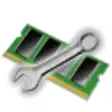Used Process Explorer for Windows?
Editors’ Review
Process Explorer stands out as an advanced system monitor and task manager designed for power users and IT professionals. Its detailed process tracking and handle/DLL inspection tools provide transparency into running applications and system behavior, making it a staple among advanced Windows users and system administrators.
Process Explorer enhances workflow with hierarchical process view and VirusTotal integration, offering deep insights without unnecessary complexity. Users value its live monitoring of threads, real-time resource graphs, and process metadata for troubleshooting tasks. Its single-executable design ensures portability and consistent performance, ideal for users needing robust, flexible diagnostic tools without extra software bloat.
Why experts trust Process Explorer
Process Explorer shows comprehensive process data with a hierarchical view that reveals parent‑child relationships and allows suspending or terminating specific threads. The lower pane offers a handle and DLL inspection, helping locate locked files or dependencies. Its search function speeds up the identification of problematic processes. Compared with Task Manager, this tool exposes more in-depth system metrics, making it valuable for diagnosing issues that built-in tools can’t surface.
Offers helpful tooltips, icon indicators, and thread stack displays within process details for smoother navigation and better user control. Users can easily check memory usage, security parameters, and command-line data. While not available across platforms, its accuracy on Windows remains unmatched and dependable. Real-time error flags, task priority controls, and the ability to terminate process trees give users greater command. Antivirus programs may slightly delay initial loading at times.
Built-in VirusTotal checks streamline malware detection with single-click file scans, significantly improving safety. Users benefit from continuous CPU graphing, accurate RAM tracking, and detailed I/O performance data, all delivered with minimal resource use and background strain. It avoids unnecessary bloat by excluding cloud sync and themes, but frequent improvements ensure it stays lightweight and effective. This makes it a trusted tool for system stability, diagnostics, and power-user-level task management.
Pros
- Offers a live hierarchical process view and resource graphs
- Enables handling and DLL inspection to locate locked files
- Integrates with VirusTotal for on-the-fly malware analysis
- Portable executable with minimal system impact
Cons
- Only available on Windows
- Initial startup may lag under antivirus interference
- Lacks themes or cross-device syncing features
Bottom Line
A must-have for system diagnostics
Process Explorer merges low-level process inspection, real-time resource visualization, and VirusTotal integration into a powerful toolset. Its hierarchical process tree and lower-pane handle/DLL view offer deep debugging clarity. Though limited to Windows, its consistent performance, detailed reporting, and low overhead make it essential for advanced users. With a no-frills, portable design, it delivers serious diagnostic capabilities without unnecessary features or bloat slowing down critical workflows.
What’s new in version 17.06
- Updated to version 17.06, optimized for Windows 10 and later
- Improved stability when loading large process trees
- Enhanced detection of handles and threaded call stacks
- Added GPU monitoring and process-tree process suspension tools
Used Process Explorer for Windows?
Explore More
HP Color LaserJet Pro MFP M477 series drivers
Free
Allway Sync (64-bit)
FreeVirtual CloneDrive
FreeWise Registry Cleaner
FreeSmart Driver Updater
FreeADInstruments ECG Analysis
FreePassword Depot 18 Corporate Edition
FreeAmazon Redshift ODBC Driver 64-bit
FreeADInstruments Cardiac Axis
Free
Airy Memory Cleaner
Trial versionSSH Copy ID
FreeADInstruments Export QuickTime
Free